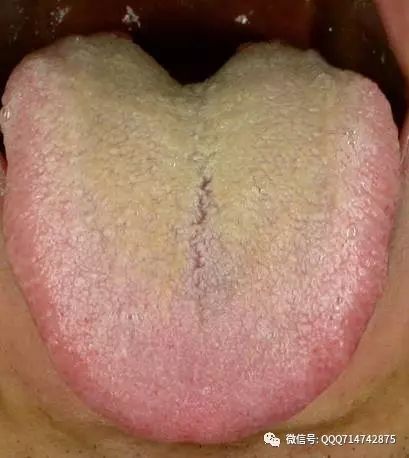Source: Luo Dalun Channel Author: Dr. Luo Dalun, TCM Doctor
Many friends often think they are weak and when they meet me, they ask: “Dr. Luo, we have some supplements at home, including ginseng, sea cucumber, cordyceps, and bird’s nest. Which one should I take for supplementation?”
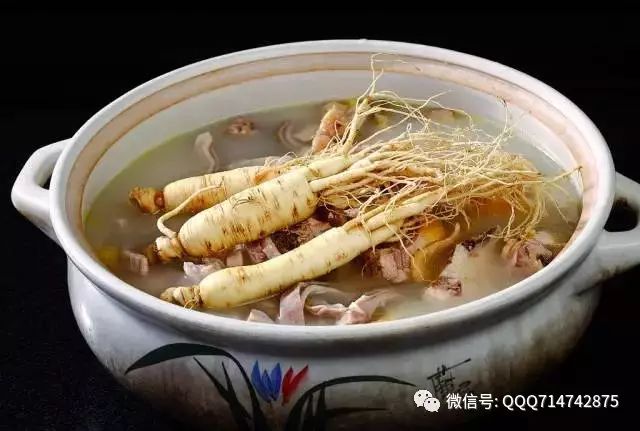
Now that autumn has arrived, many people are starting to prepare for winter supplementation, which is a custom in the south and is important for protecting the body.
However, this really depends on one’s constitution; first, one must not supplement incorrectly! For example, ginseng is a great health tonic. Sir Run Run Shaw, a billionaire from Hong Kong, lived over a hundred years, and during his lifetime, he took wild ginseng for a long time, consuming a root worth 20,000 HKD daily. Later, he learned qigong and gradually reduced his intake. However, he became healthier and lived to a hundred. Yet, some people experience nosebleeds after taking it. Why is that? Because ginseng tonifies Qi, and for those with Qi deficiency, taking it will improve their health. However, if one has Yin deficiency or excess heat, taking it will only increase the heat, leading to nosebleeds as a natural consequence!
Therefore, supplementation must consider one’s constitution; do not get the direction wrong.
Additionally, some constitutions should not be supplemented at all but rather need to be cleared, such as the phlegm-damp constitution we are discussing today.
First, let’s look at what “dampness” is.
Dampness refers to the moisture we intake that the body cannot fully transform and expel due to certain reasons, resulting in retention within the body, which obstructs the circulation of Qi and blood, known as endogenous dampness. External dampness refers to the dampness from the weather. When both combine, the situation worsens.
So, what is the “phlegm” in phlegm-dampness?
In TCM, phlegm is classified into “visible phlegm” and “invisible phlegm.” Visible phlegm refers to the phlegm we cough up. Invisible phlegm refers to pathological fluids that are thick and sticky within the body, such as phlegm formed from water and dampness accumulation or phlegm resulting from excessive consumption of rich and fatty foods, leading to metabolic waste retention.
When dampness increases, phlegm also increases, and the presence of phlegm further exacerbates dampness. The combination of phlegm and dampness is even worse.
What does the tongue look like for someone with a phlegm-damp constitution?
Let’s take a look at this tongue photo!
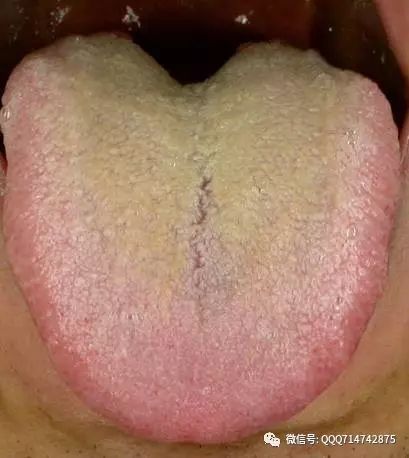
What symptoms do people with a phlegm-damp constitution exhibit?
Let’s list them one by one!

1. Tongue appearance: The tongue is enlarged, with a slippery and greasy coating, thick, and the color of the coating is white or yellow, often with teeth marks on the edges.
2. Body shape and complexion: The body is overweight, especially with a soft and full abdomen, limbs easily swollen, facial skin oily, complexion pale yellow and dull, eyelids slightly puffy, easily fatigued, and snoring loudly during sleep.
3. Sensations in the mouth and limbs: The mouth feels sticky, lips are pale, rarely feeling thirsty, and not wanting to drink water. Sweating easily, with sticky sweat, skin feels cool after sweating, heavy and sluggish body, often feeling dizzy, joint pain, numbness of the skin, and prone to tinnitus.
4. Sensations and sleep: The body feels sore and weak, lethargic, and easily fatigued. Chest tightness, excessive phlegm, prone to gastrointestinal discomfort, and a preference for rich and fatty foods.
5. Bowel and bladder: Frequent, unformed stools that stick to the toilet, and cloudy urine.
6. Pulse: The pulse is slippery and soft.
7. In Western medical examinations, individuals with a phlegm-damp constitution have significantly higher cholesterol, triglycerides, low-density lipoprotein, and blood sugar levels compared to those without this constitution.

I estimate that many friends are starting to feel they may have a tendency towards this phlegm-damp constitution, and will ask: “So what should I do?”
It is important to remind everyone that individuals with this constitution should not easily supplement; if they do, it is like adding fuel to the fire, making things worse. I once saw a phlegm-damp entrepreneur who was prescribed a tonic by a master, and that prescription contained almost all the tonifying herbs I had ever seen, tonifying Qi, blood, Yin, and Yang all at once, probably following a textbook formula. In the end, this entrepreneur became dizzy and fainted in public.
Supplementing to the point of collapse…
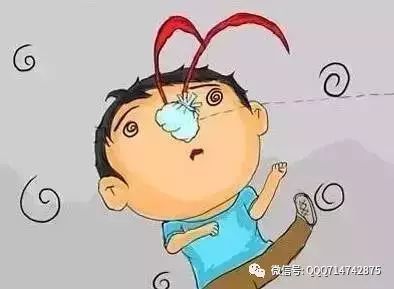
So, how should people with a phlegm-damp constitution regulate themselves?
It is very simple: clear phlegm through diet and strengthen exercise.
For individuals with this constitution, I suggest eating more radishes and cabbage, and less rich and fatty foods. If you can resist and change your taste, there is hope to change your constitution.
Additionally, exercise is crucial; for individuals with this constitution, maintaining a consistent exercise routine is greatly beneficial for recovery.
I remember a friend I met while teaching at the Cheung Kong Graduate School of Business, named Zhu Guofan, who founded a company called Liangzi Fitness, headquartered in Beijing. At that time, he was studying at the Cheung Kong Graduate School of Business. He invited me to visit their company and shared his story, which amazed me.
This Mr. Zhu is from Henan, and he is very confident about his health, having never undergone a health check. Later, by chance, he went to Shanghai for a business trip and was persuaded by a friend to get a check-up. The results shocked him; his indicators were particularly poor, with all the “three highs” and fatty liver. He then asked the doctor what medicine to take. The doctor said no medicine was needed, just exercise. He asked, “What kind of exercise?” The doctor replied: walking!
When Mr. Zhu heard this, he thought, isn’t it just walking? Great! I’ll walk and see if I can get better!
So, he left the hospital, returned to the hotel, packed his bag, and started walking from Shanghai to Beijing!
He walked for about two months, prioritizing his health over work, focusing solely on walking.
Then, upon arriving in Beijing, he didn’t go home but went directly to the hospital for a check-up.
What were the results? I’m sure everyone can guess; his health was completely normal! All indicators were normal!

This example shows us that exercise can solve many problems, and this phlegm-damp constitution, characterized by excessive nutrition, is very suitable for exercise.
Now I see Mr. Zhu Guofan’s Weibo, and he is doing nothing else but leading everyone to walk, organizing an event called “Extraordinary Footprints,” walking everywhere, previously in California, then in Australia, and recently in the Gobi Desert, and now in Shanghai, leading a large group of people to walk all over the world, which is quite joyful.
So, if you want to use herbal formulas to resolve phlegm and dampness, what should you do?
I suggest using the formula of Wen Dan Tang (Warm Gallbladder Decoction) for foot baths.
This formula is as follows:
Wen Dan Tang: 30g of Fu Ling (Poria), 6g of Ban Xia (Pinellia), 9g of Chen Pi (Aged Tangerine Peel), 6g of Zhi Gan Cao (Honey-Fried Licorice), 6g of Zhu Ru (Bamboo Shavings), and 6g of Zhi Shi (Bitter Orange).
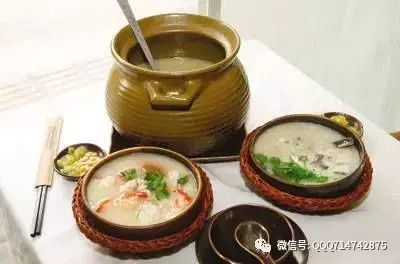
If there is cold phlegm, and the body always feels cold with a snowy white tongue coating, add 5 slices of Sheng Jiang (Fresh Ginger). If it is phlegm-heat, such as a red tongue with a sticky coating that is slightly yellow, then do not add ginger.
You can use this formula to brew water, then mix the herbal decoction with warm water for foot baths, twice a day for 20 minutes each time. Pregnant women should avoid using it.Generally, using about five doses will yield results.
After achieving results, if the tongue coating becomes thinner and no longer thick and greasy, you can take one or two boxes of Xiang Sha Liu Jun Zi Wan (Aromatic Sand Six Gentlemen Pills) for follow-up care.
However, everyone must remember that this constitution is closely related to lifestyle habits, so physical exercise and a light diet are the true remedies for improvement!
I believe that if you see your tongue indicating a phlegm-damp constitution, you should live like a rabbit, munching on radishes and cabbage every day, and hopping around. You see, not only will you be healthy, but you will also become more adorable!
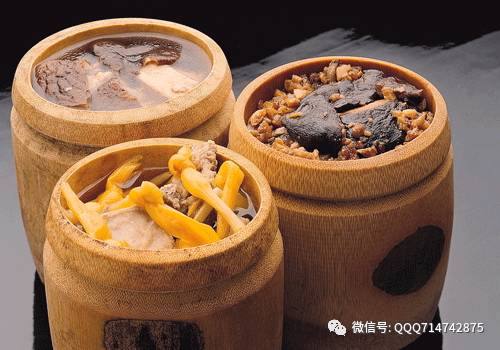
Appendix: How should individuals with a phlegm-damp constitution take care of themselves?
In TCM, phlegm refers not only to the visible phlegm that is coughed up but also includes “invisible phlegm.” TCM states that phlegm is always associated with fluid, known as phlegm-fluid, which broadly refers to pathological products generated when the body’s water and fluids cannot be transformed, remaining or seeping into certain parts of the body. It is generally believed that thicker substances are phlegm, while thinner ones are fluids. “Accumulated water becomes fluid, and fluid condenses into phlegm.” If the digestive system malfunctions, leading to abnormal accumulation of fluids, it will generate internal dampness. Phlegm-fluid is both a pathological product and a pathogenic factor.So, what kind of people are prone to phlegm-dampness? There is a saying: “Fat people have more phlegm, thin people have more fire.” TCM has summarized and categorized people into nine constitutions over time, among which individuals with a phlegm-damp constitution are generally overweight, with a soft and full abdomen, oily facial skin, a preference for rich and sweet foods, and due to internal fluid retention, they rarely feel thirsty, are lethargic, and often feel sticky in the mouth, with a large tongue, greasy coating, and teeth marks on the edges, and frequent unformed stools.
How should individuals with a phlegm-damp constitution maintain their health? Try cupping at the following acupoints to eliminate phlegm and resolve dampness.
Zhong Wan (Middle Cavity) point
The Zhong Wan point is located in the upper abdomen, 4 inches above the navel (the distance from the xiphoid process to the navel is 8 inches, so the Zhong Wan point is at the midpoint of the line connecting the xiphoid process and the navel), on the anterior midline. The Zhong Wan point is the mu point of the stomach, which governs the reception and transformation of food and fluids. All organs rely on the stomach for Qi. If the stomach function is abnormal, the source of Qi and blood production is insufficient, leading to malnourishment of the organs and meridians. Any cause of spleen and stomach weakness or dysfunction can be treated at Zhong Wan. It can be said that the Zhong Wan point can treat all diseases of the spleen and stomach. Cupping at the Zhong Wan point has the effect of harmonizing the stomach, strengthening the spleen, and promoting water metabolism.
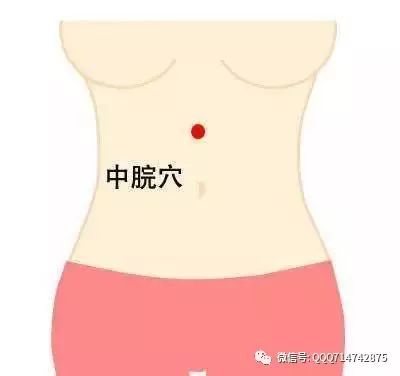
Feng Long (Abundant Dragon) point
The Feng Long point is known as the key point for eliminating phlegm, located on the stomach meridian of the foot yangming, on the outer side of the lower leg, 8 inches above the outer ankle tip, at the outer edge of the tibialis anterior muscle (the distance from the popliteal crease or the highest point of the knee to the outer ankle tip is 16 inches, and the Feng Long point should be at the midpoint of this segment). The Feng Long point, in combination with Fei Shu (Lung Shu) or Chi Ze (Cubital Marsh), Tian Tu (Heavenly Pivot) points, can eliminate phlegm from the lung system and treat cough and asthma.
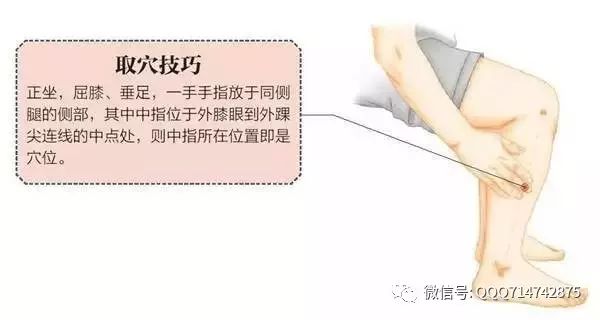
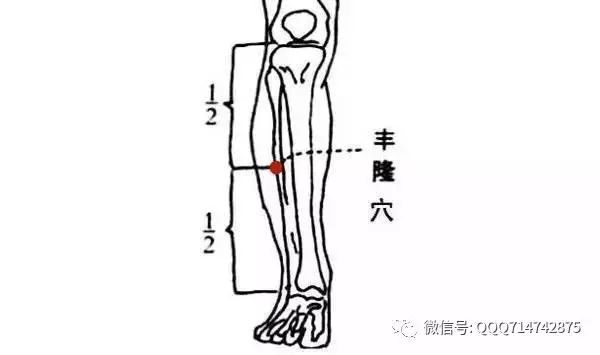
Yin Ling Quan (Yin Mound Spring) point
The Yin Ling Quan point is known as the key point for eliminating dampness, located on the spleen meridian of the foot taiyin, on the inner side of the lower leg, in the depression between the lower edge of the tibia and the inner edge of the tibia (this location is a bit difficult to understand; it is actually just below the inner side of the knee, at the lower edge of the inner tibia, pressing and rubbing will feel sore). The Southern Shaolin Fire Kung Fu Massage Research Institute suggests: When it comes to phlegm, people naturally think of lung diseases, but that is not the case; the lungs are merely the storage for phlegm, while the spleen is the source of phlegm production. The spleen governs transformation and transportation; if the spleen fails to function properly, water and dampness will stagnate, leading to phlegm formation. The Yin Ling Quan point strengthens the spleen, promotes water metabolism, and when paired with the Feng Long point, enhances the effect of eliminating dampness and phlegm.
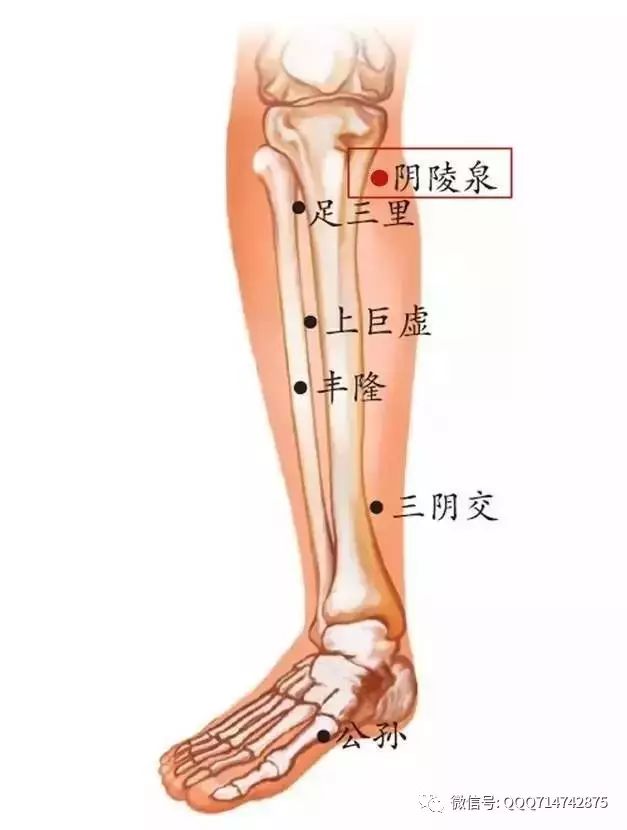

At each of the above acupoints, select appropriate-sized cups for cupping, leaving the cups for 10-15 minutes. Once the cupping marks have mostly disappeared, proceed to the next cupping session, generally 10 sessions make a treatment course. If blisters appear on the skin after cupping, small ones should be avoided from being broken to prevent infection, while larger ones can be pricked to let the fluid out, disinfected, and covered with gauze. After the fluid is absorbed, the next cupping session can be performed.
TCM categorizes human constitutions into nine types, in addition to the relatively healthy and stable balanced constitution, there are also Yang deficiency, Yin deficiency, Qi deficiency, phlegm-damp constitution, damp-heat constitution, blood stasis constitution, Qi stagnation constitution, and special constitution. Due to differences in innate endowment, dietary habits, geographical variations, and personal temperaments, there are variations in constitutions among individuals. The differences in personal constitution are the basis for TCM syndrome differentiation and treatment, so only by choosing a treatment plan suitable for oneself can one harmonize Yin and Yang within the body and adjust to the best state. However, personal constitution is not fixed; it can change with variations in living environment and habits, so individuals are not limited to one constitution.
Do you know yourself well enough? Do you know what your constitution is? If you want to find out, you can download the TCM constitution questionnaire online or go to a TCM hospital for a TCM-style health check-up. I believe you will understand your health status better, which will not only help with daily health maintenance but also with disease prevention, which is what TCM refers to as “preventing disease before it occurs.” The so-called “the best practitioners prevent disease before it occurs, rather than treating it after it has occurred.” We should not only treat diseases once discovered but also prevent them, understanding the trends of disease occurrence and taking preventive measures before diseases occur. Get to know your constitution, maintain daily health, and be a “top practitioner!”
This article is copyrighted by “Luo Dalun Channel.”
The first one is “New Meridians” |
This public account allows you to quickly master various TCM health preservation and therapy tips that are “simple, practical, easy to learn, and effective.”
|
The second one is “Subconscious Acupoint”“ This public account mainly helps you decode the “subconscious” mysteries. Anyone who understands the wonders of the “subconscious” can make their life smooth sailing…… |
|
The third one is “The Ship Has Arrived”“ |
One expert appointment can only see one patient, while a good medical or health article can benefit thousands of people. What “The Ship Has Arrived” does is the latter.
|
There are two methods: 1. Long press the QR code image below, then click “Recognize the QR code in the image,” and finally click “Follow” to add.
(“New Meridians” QR code image)
“Subconscious Acupoint”“ QR code image

“The Ship Has Arrived”“ QR code image
 2. Open the QR code scanner on your WeChat and scan the above image to follow.
2. Open the QR code scanner on your WeChat and scan the above image to follow.

